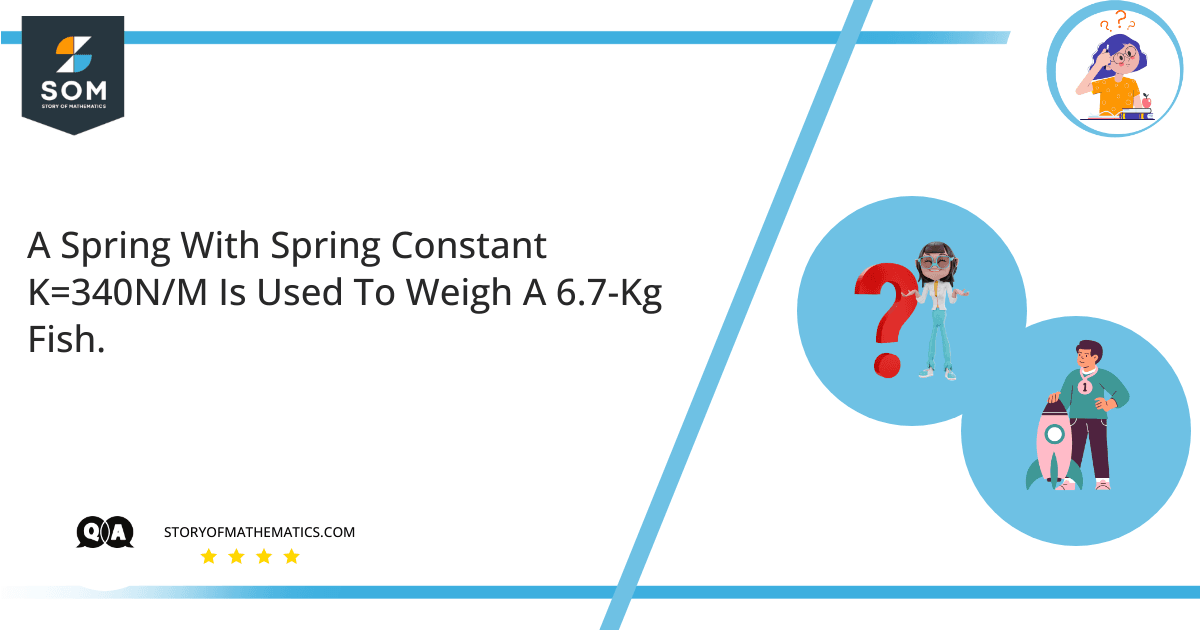
This question aims to find the change in the length of spring (used to weigh 6.7-kg fish), which is displaced from its mean position. The value of the spring constant is given as k=340N/m.
Hooke’s law states that the force exerted by the spring when stretched or compressed from its mean position is directly proportional to the distance it covers from its mean position.
Spring is called ideal if it has an equilibrium length. The spring in compression is directed towards its mean position, and its length changes from its equilibrium length. This change in length shows a decrease in the equilibrium length.
On the other hand, the spring in a stretched state exerts a force away from its mean position, and the change in length is always greater than the equilibrium length.
The spring in a stretched or compressed state exerts a force to restore the equilibrium length of the spring and to make it come back to its mean position is called the restoring force.
F = -k{x}
Where k is called the spring constant, x represents the change in length from its equilibrium length, and F is the force exerted on the spring. The spring constant measures the stiffness of the spring. At the mean position, the spring has no displacement i.e, x=0, and it changes when the spring is at extreme positions.
The elastic limit is reached when the displacement becomes very large. Stiff objects show very small displacement before the elastic limit is reached. Pulling or pushing an object beyond its elastic limit causes a permanent change in the shape of the spring.
Expert Answer
The force exerted by the spring on the object is equal to the mass of the object attached to that spring. Since the mass is pulled by gravitational force, we will use:
\[F = K x\] , \[F= m g\]
\[k x = m g\]
\[x = \frac{m \times g}{k}\]
Value of spring constant $k$ = $340 N/m$
Mass of the fish $m$ = $6.7 kg$
The change in length $x$.
Numerical Solution
By putting the given values of $k$ and $m$ and $g$ = $9.8ms^{-1}$ in the formula, we will get:
\[x = \frac{ 6.7 \times 9.8}{340}\]
\[x = 0.193 m\]
The change in length of the spring stretched by the fish will be $x$ = $0.193$.
Example:
A spring having force $100N$ is stretched and displaced by $0.8m$. Find the spring constant.
The given values are:
\[Force( F) = 100N\]
\[Displacement (x) = 0.8m\]
To find the spring constant,
\[F = -kx\]
\[k = \frac{-F}{x}\]
\[k = \frac{-100}{0.8}\]
\[k = -125 N/m\]
The value of spring constant is $k$ = $-125 N/m$.
Image/Mathematical drawings are created in Geogebra.
